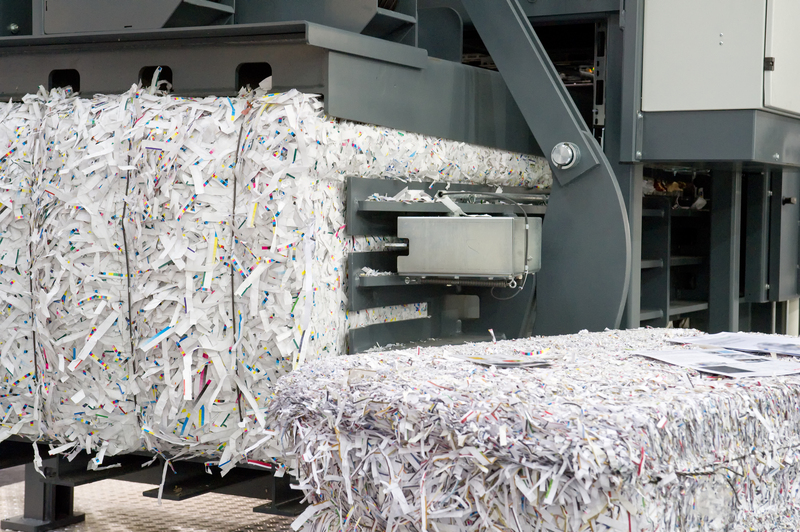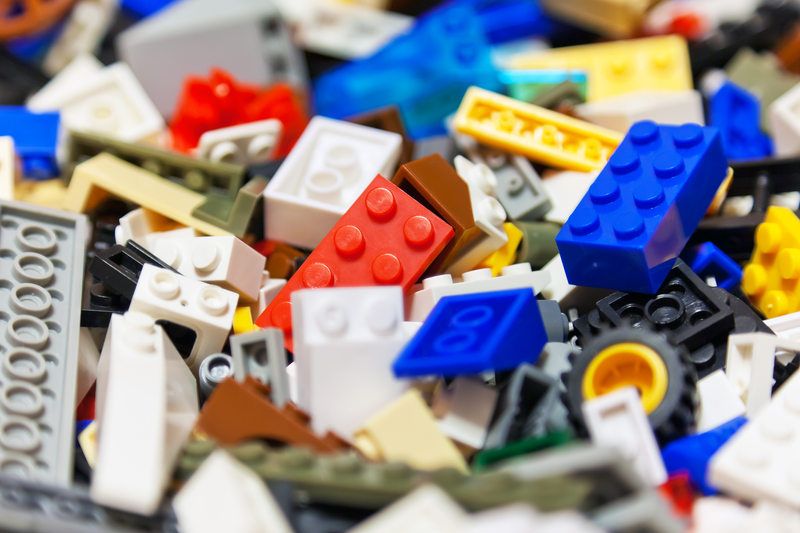Household Hacks to Reduce Your Waste Footprint
Have you ever considered how much waste your home generates every week? Modern households are significant contributors to the world's growing waste crisis, but the good news is that small changes can create a big difference. Embracing sustainable habits and clever household hacks can help you reduce your waste footprint, save money, and benefit the planet. In this comprehensive guide, we'll provide actionable strategies and eco-friendly tips to minimize waste in every corner of your home.
Why Focus on Reducing Household Waste?
Before diving into household waste hacks, it's essential to understand the importance of reducing your waste footprint. Every item we throw away has a lifecycle: from resource extraction, manufacturing, transportation, to disposal. Waste contributes to environmental issues like pollution, greenhouse gas emissions, and overflowing landfills. By reducing waste at home, you directly participate in responsible stewardship of Earth's resources and help pave the way for a more sustainable future.
- Conserves natural resources and reduces energy demand
- Cuts down landfill use and related pollution
- Lowers your carbon footprint
- Saves money by maximizing product use
- Encourages mindful consumer habits

Getting Started: Conducting a Home Waste Audit
The first step to reducing your household waste footprint is to understand what types of waste you generate most. Try these steps:
- Track your trash: For a week, collect and categorize what your family throws away.
- Identify problem areas: Is your kitchen the main source? Or is it packaging from deliveries?
- Set goals: After reviewing, choose specific areas to target first.
Kitchen Hacks to Cut Down Household Waste
1. Ditch Single-Use Plastics
Single-use plastics like cling wrap, ziplock bags, and plastic utensils are among the biggest contributors to household waste. Here's how to cut them out:
- Replace sandwich bags with silicone or beeswax reusable wraps.
- Switch to glass storage containers for leftovers.
- Use stainless steel or bamboo utensils for meals and take-out.
This one simple change can drastically reduce your home's waste footprint.
2. Shop with Zero Waste in Mind
- Bring your own reusable bags and produce sacks to the supermarket.
- Purchase pantry staples in bulk using your own containers.
- Avoid individually wrapped items; buy family or bulk packs instead.
- Consider farmer's markets for local, low-packaging produce.
3. Embrace Food Waste Reduction Strategies
Did you know almost one-third of all food produced globally is wasted? Use these hacks to cut down:
- Plan your meals and stick to your grocery list to avoid buying excess.
- Store food correctly for longer shelf life (use airtight containers, refrigerate properly).
- Repurpose leftovers into new meals, such as soups, stir-fries, or casseroles.
- Compost food scraps to return nutrients to the soil and keep waste out of landfills.
- Freeze extra portions for later use to prevent spoilage.
4. DIY Cleaning Solutions
Many household cleaners come in single-use plastic bottles and contain harsh chemicals. Try making your own:
- Mix vinegar, baking soda, and lemon for an all-purpose cleaner.
- Use old clothes as reusable cleaning rags instead of disposable wipes.
This reduces packaging waste and chemical runoff into the environment.
Bathroom and Laundry Room Waste Reduction Ideas
1. Switch to Reusable Alternatives
- Try washable cotton rounds for removing makeup.
- Use bar soap instead of liquid soap in pump bottles.
- Opt for bamboo toothbrushes instead of plastic ones.
- Replace paper towels with cloth napkins and hand towels.
2. Choose Eco-Friendly Hygiene Products
- Switch to menstrual cups or reusable cloth pads.
- Buy toilet paper made from recycled materials.
- Purchase bulk shampoo and conditioner bars to cut down on plastic packaging.
3. Laundry Room Hacks
- Use laundry detergent sheets or powder in cardboard boxes.
- Dry your clothes on a line instead of using a dryer to save energy and extend textile life.
- Repair small rips instead of discarding clothes right away.
Household Waste Minimization in Daily Routines
1. Reuse and Repurpose
- Jars and containers can be reused for storage or crafts.
- Old t-shirts become cleaning rags or pet bedding.
- Receiving packaging? Save cardboard and bubble wrap for future shipping needs.
- Glass bottles make unique vases or water bottles.
2. Donate or Sell Before Discarding
- Donate gently used items to local shelters or charity shops.
- Host a garage sale or sell online instead of tossing things out.
- Offer items on neighborhood sharing platforms to give them a new home.
3. Repair and Upcycle
- Learn simple sewing: Mend clothes or upcycle jeans into shorts.
- Fix small electronics with DIY kits or at repair cafes.
- Paint or re-stain furniture instead of replacing it.
Smart Shopping: Choosing Sustainable Products
1. Support Brands with Eco-Conscious Packaging
Seek out companies that prioritize recycled, recyclable, or compostable packaging--helping you reduce packaging waste at home.
- Look for minimal packaging or packaging-free products.
- Support local producers who use environmentally friendly wraps and containers.
2. Buy Quality Over Quantity
Higher-quality products often last longer, which cuts down on overall waste. This is especially true for furniture, appliances, clothing, and household goods.
3. Opt for Second-Hand and Vintage Finds
- Thrift shops and online marketplaces extend the life of goods and reduce demand for new resources.
- Antique and vintage items offer unique style without additional production waste.
4. Avoid Impulse Buys
One of the best hacks to reduce your household waste footprint is simply to buy less. Pause before purchases and ask if you truly need the item.
Mastering Composting: A Key Household Waste Solution
1. Setup a Home Compost Bin
Composting is a powerful way to shrink your waste output and create valuable soil for gardening.
- Choose your method: Outdoor compost pile or indoor bin for apartments.
- Collect food scraps: Fruit/veggie peels, coffee grounds, eggshells, and yard waste.
- Avoid composting meat, dairy, and fatty foods indoors to prevent pests.
- Turn your compost regularly and maintain moisture for best results.
Finished compost can be used in your garden, pots, or shared with neighbors--a true zero waste lifestyle win!
Waste Segregation: Make Recycling Easy
An effective household hack to reduce waste is setting up a straightforward recycling system:
- Label bins clearly for recyclables, compost, and landfill trash.
- Rinse containers before recycling to prevent contamination.
- Educate family members about what can and can't be recycled locally.
- Reuse plastic bags for liners where recycling services allow.
Technology Hacks to Minimize Digital and Electronic Waste
1. Go Paperless
Switching to digital billing, subscriptions, and note-taking drastically reduces paper consumption and clutter.
2. Responsibly Recycle E-Waste
Electronics can be a significant source of hazardous waste when improperly discarded. Use local e-waste collection events or return electronics to manufacturers for safe recycling.
3. Extend Device Lifespan
- Keep software updated to extend device life.
- Replace batteries and parts instead of buying new devices.
- Donate or sell old tech so it can be reused elsewhere.
Engage and Educate: Make Waste Reduction a Family Affair
Involving every member of your household ensures these changes stick. Try these tips:
- Host regular challenges (who can create the least waste in a week?)
- Make waste reduction fun with DIY upcycling or cooking projects.
- Reward zero waste habits through family treats or outings.

Frequently Asked Questions about Reducing Household Waste Footprint
How can I start reducing my waste footprint at home?
Begin with a waste audit to identify problem areas, and implement simple swaps like reusable bags, bottles, and containers. Start composting and make your own cleaning solutions for a quick reduction in waste.
Does reducing my household waste really make a difference?
Absolutely! Small changes add up, especially when entire communities participate. You'll lower demand for single-use items, reduce greenhouse gas emissions, and set an example for others.
Is it expensive to live a low-waste lifestyle?
Many waste-reducing hacks save money by eliminating disposable purchases and motivating mindful shopping. Investing in durable goods pays off over time.
Conclusion: Start Your Journey Toward a Lower Waste Household Today
Adopting household hacks to reduce your waste footprint doesn't require perfection--just progress. By making mindful choices and incorporating eco-friendly habits into everyday life, you'll help create a cleaner, healthier planet for generations to come. Every effort counts, and your home is the best place to start!
Share your own waste-cutting tips and inspire friends and neighbors. Together, we can build a more sustainable, zero-waste world from the ground up.